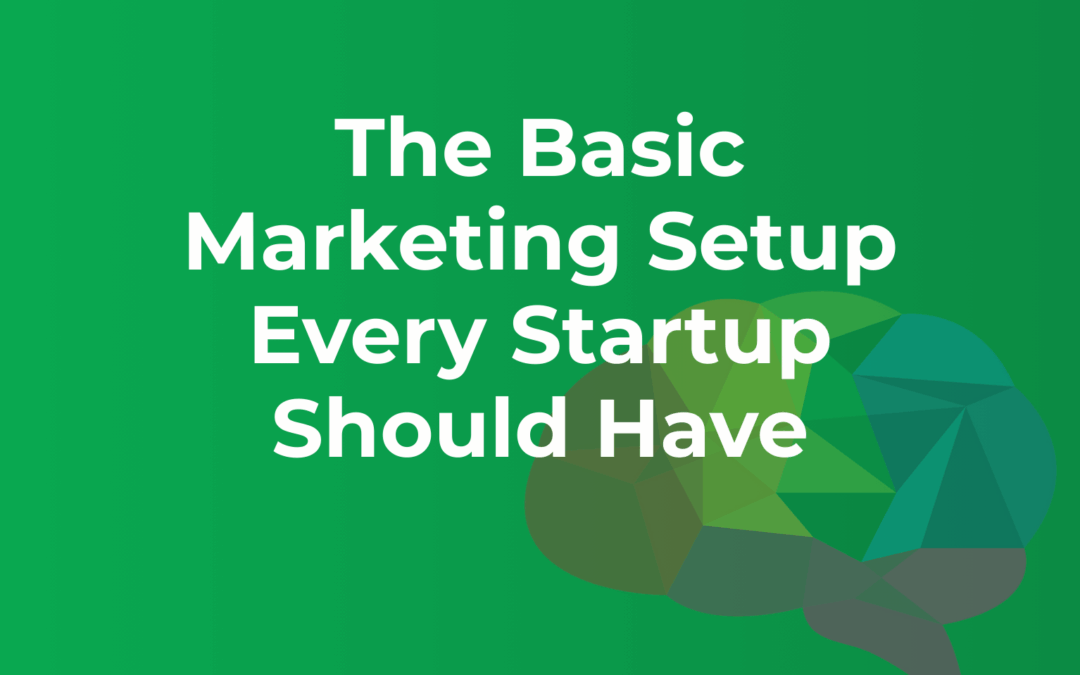Starting a company is hard. Getting the word out shouldn’t be.
If you’re a founder without a marketing team (or budget), the good news is: you don’t need a massive strategy to make your business look real, feel trustworthy, and start attracting the right people.
You just need a basic marketing setup — a few smart, low-effort pieces that make a big impact.
Here’s what that looks like. No fluff. No jargon. Just the stuff that works.
1. Brand Basics (Start Looking Like a Real Company)
You don’t need a full brand book. You do need to look like an actual business.
Here’s what should be part of your basic marketing setup:
-
-
-
- A clear value proposition — who you help, what you offer, and why it matters
- A name + domain you can stand behind
- A basic logo (a stylized name counts — Canva is your friend)
- 2–3 brand colors and a font pairing
- A consistent tone of voice (formal? friendly? founder-to-founder?)
-
-
These elements make your marketing look and feel cohesive — even if you’re just getting started.
2. A One-Page Website That Works
You do not need a five-page site, a CMS, or a developer.
You just need one clear page that includes:
-
-
-
- What your company does (value prop up top)
- Who it’s for
- How to get in touch (email or contact form)
- A way to join your email list
-
-
This is the foundation of your online presence — and an essential part of any basic marketing setup.
You can build this in an afternoon using tools like Squarespace, Carrd, Wix, or even Notion + Super.
The platform doesn’t matter. The clarity does.
3. An Email List (Even If You’re Not Sending Yet)
You might not be ready to send a newsletter. That’s okay.
You should still start collecting emails now.
Why? Because attention is hard to earn — and even harder to get back.
Set up a Mailchimp or ConvertKit account. Add a signup form to your site with simple, friendly copy:
“Want updates as we build? Drop your email here.”
Bonus: set up a short welcome email so people hear from you right away.
Starting your list is a low-effort, high-impact piece of your basic marketing setup.
4. One Place to Share Updates Consistently
You don’t need to be everywhere.
You just need to be somewhere — consistently.
Pick one channel:
-
-
-
- Your blog
- Your LinkedIn
- A lightweight newsletter
-
-
And post something once a week or every other week. Share things like:
-
-
-
- What you’re building
- Customer wins or lessons
- Progress updates or milestones
- Common questions and your answers
-
-
This helps you stay visible, build trust, and create momentum — without the stress of being “on” all the time.
5. A Simple Marketing Stack That Won’t Break You
Here’s what your basic marketing setup needs to run smoothly in the early days:
| Need | Recommended Tools |
| Website | Squarespace, Carrd |
| Mailchimp or ConvertKit | |
| Scheduling | Calendly or SavvyCal |
| Analytics | Google Analytics or Fathom |
| Project tracking | Notion, Trello, or Google Docs |
| Passwords | Google Workspace, Notion, or 1Password |
That’s it. You don’t need a giant tech stack. These tools will grow with you — or be easy to swap later.
Final Thoughts: Don’t Wait to Be “Ready”
Most founders wait until they have more traction, more funding, or more time to “get serious” about marketing.
But here’s the truth:
You’ll grow faster when you look ready now.
This basic marketing setup helps you:
-
-
-
- Look legit
- Stay organized
- Build real traction
— without overbuilding or overspending too early.
-
-
And when you’re ready for more?
That’s where Mathlete comes in.

